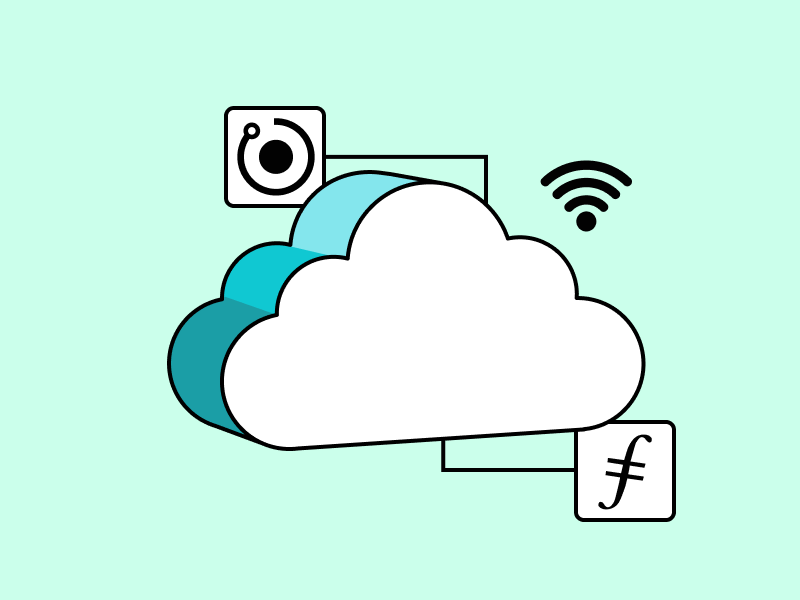
In a world where technology evolves at lightning speed, managing real-world assets has become increasingly complex. Enter DePIN, a revolutionary technology that promises to simplify and transform how we handle these assets. But what exactly is DePIN, and why is it generating so much buzz? Let’s dive in and explore its potential.
What is DePIN?
DePIN stands for Decentralized Physical Infrastructure Network. At its core, it uses blockchain technology to manage and track physical assets. Think of it as a digital ledger that records every detail about an asset, from its origin to its current state. Imagine a magical network that controls all the appliances in your house, that is DePIN. This ledger is decentralized, meaning no single entity controls it. Instead, it's maintained by a network of computers working together, ensuring transparency and security, which is incentivized through cryptocurrencies.
What Are Its Perks? Why Are People Talking About It?
DePIN is also looked upon due to it tokenizing physical, tangible assets onto the blockchain. They then become RWAs (Real World Assets) in terms of fungible or non-fungible tokens. The perks from doing this are endless, with main ones being the increase in liquidity of assets, ease of buying/selling, fractional ownership of tangible assets and the removal of the need to a middleman.
Another one of the biggest perks of DePIN is its ability to provide transparency. Imagine a world where you can track the journey of a product from the factory to your doorstep, knowing exactly where it has been and how it has been handled. This transparency builds trust between businesses and consumers. DePIN also offers enhanced security. By decentralizing information, it reduces the risk of data tampering. This is crucial for industries where data integrity is paramount, like healthcare and finance.
What Are Some Current Possibilities and Uses for This Technology?
Current DePIN and RWA technologies such as Helium and Filecoin highlights the potential benefits and effectiveness of these technologies.
Helium is a project that builds up wireless connectivity in a decentralized way. Currently, they provide cellular and WIFI networks. They are a consumer-facing cryptocarrier, using the same token-incentivized model to motivate contributors to buy and install Helium cellular radios. By tokenizing such an asset, it can be bought or sold permissionlessly, with the physical device being shipped separately. Token rewards accrue on the device NFT itself and are redeemable by the wallet(s) that own(s) the NFT.
Given multiple owners, the NFT can be fractionalized, allowing several investors to fund the purchase and deployment of the device and receive token rewards equal to their proportional contribution to the device's deployment. By leveraging a simple multi-signature wallet, investors could remove the need for an escrow service and lessen legal fees due to the trustless and permissionless nature of blockchain technology.
Helium’s model allows for rapid scaling and extensive coverage without the need for massive capital investment typical of traditional telecom companies.
Filecoin provides a decentralized storage solution by allowing users to rent out unused storage space. This reduces reliance on centralized data centers and ensures data redundancy and security. Miners are rewarded with FIL tokens for providing storage and retrieving data, creating a market-driven approach to data storage that can adjust dynamically with demand. Users pay for storage on providers, who are responsible for storing files and proving their correctness over time.
Because Filecoin is not owned by a single entity, it facilitates open markets for storing and retrieving files, allowing anyone to participate without any single company controlling available storage or price. This disrupts the current dominance of the current duopoly within the cloud storage space, AWS (amazon) and GCP (google) by direct competition, as anyone can buy and sell storage space. This also creates a huge source of highly secure data storage without the need for large amounts of hardware or massive investments.
What Are Some Future Possibilities for This Tech? How Can It Improve Our Current Lives?
Looking ahead, DePIN could revolutionize how service-based businesses are grown and spread as well as how we manage and view assets.
Helium and Filecoin have proven that a service model built around DePIN and RWA technologies can allow for rapid scaling, while still providing transparency and trust within providers and buyers alike through the inherent characteristics of blockchain technology. Further more, It allows for a new form of collaboration between communities, and the removal of power from centralized authorities.
Transportation and logistics can be improved the DePIN by enhancing efficiency in autonomous vehicle fleet management, real-time route optimization, and reducing congestion and emissions. Blockchain can secure and streamline supply chains, resulting in a seamless, integrated transportation network that significantly reduces environmental footprint.
Sustainable energy solutions can also be promoted with such technologies by decentralizing production, allowing households to consume and produce energy, contributing surplus power to a shared grid. This peer-to-peer system reduces fossil fuel dependency and ensures a resilient energy infrastructure for climate change.
Conclusion
DePIN is a promising piece of technology with the potential to change how we manage real-world assets. Its ability to provide transparency, security, and efficiency makes it an attractive option for various industries. As it continues to evolve, DePIN could improve our daily lives, making systems more reliable and accessible. The future of asset management looks bright, and DePIN is leading the charge.